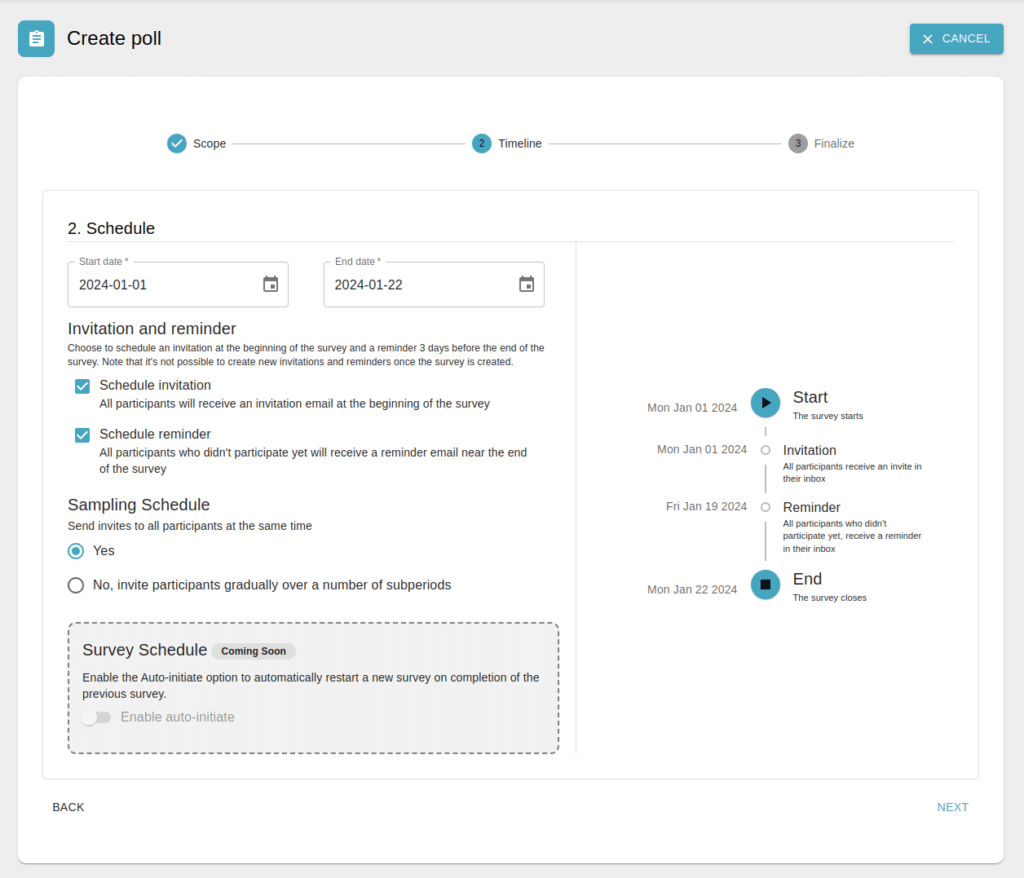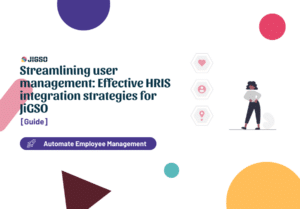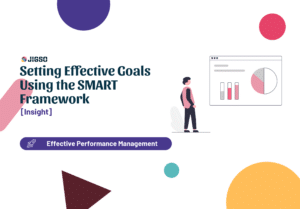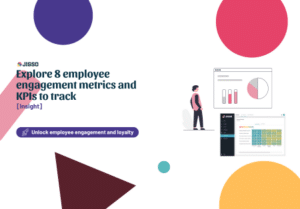Navigating the world of employee engagement can be challenging. A comprehensive Employee Engagement Survey is a powerful tool that allows you to gauge how your staff is feeling and what improvements can be made for a more productive and positive work environment.
In this in-depth guide, we walk you through the process of conducting an effective engagement survey, from understanding its importance to crafting the perfect questions, ensuring high participation rates, and effectively implementing feedback. Discover how these insights can boost your company’s performance and cultivate a thriving workplace culture.
Understanding the Employee Engagement Survey
What is an Employee Engagement Survey?
An Employee Engagement Survey is a powerful tool used by organizations to assess the commitment, enthusiasm, and productivity of their employees towards achieving the company’s goals.
These surveys provide a channel for employees to express their feelings about their work environment, leadership, job roles, professional growth, company culture, and more. The responses from these surveys provide a wealth of insights that are invaluable in developing strategies to improve employee satisfaction and overall organizational performance.
Types of Engagement Surveys
There are several types of engagement surveys, each serving a specific purpose:
Pulse Surveys: Short and frequent, pulse surveys are designed to capture real-time insights into employee sentiments. They are usually focused on one specific topic and are used to identify trends in employee feelings and attitudes.
Annual Engagement Surveys: These are in-depth surveys that provide a comprehensive understanding of employee engagement across the organization. They cover a wide range of topics, including job satisfaction, career development, leadership, and culture, among others.
eNPS (Employee Net Promoter Score) Surveys: These surveys measure an employee’s willingness to recommend the company as a place to work. While the simplicity of the eNPS makes it appealing, it doesn’t capture detailed insights into specific engagement factors. Hence, it’s essential to supplement eNPS surveys with more comprehensive surveys for a holistic understanding of employee engagement.
Why Conduct an Employee Engagement Survey?
Employee engagement surveys are pivotal to any organisation for several reasons:
Identify Strengths and Areas of Improvement: They help pinpoint areas where the organisation excels and the areas that require improvement. This allows the organization to formulate strategies to address the weak areas while building on the strong ones.
Increase Employee Retention: Regular feedback helps organizations understand employee concerns and take action to address them, leading to increased job satisfaction and employee retention.
Boost Productivity: Engaged employees are highly productive. By understanding and improving employee engagement, organisations can enhance productivity and drive business growth.
Navigating the Pre-Survey and In-Survey Stages Successfully
Deciding Your Area of Focus
Define your objectives for the survey. You might be interested in assessing the overall engagement levels or zeroing in on specific topics such as the effectiveness of internal communication, the perception of leadership, work-life balance, or diversity and inclusion. Your survey’s focus should align with your organizational goals and current needs.
Deciding Your Audience
Identify your target audience. Is it going to be a company-wide survey or are you focusing on certain departments, teams, or roles? The choice of your audience will depend on the purpose of your survey. Remember, to get a comprehensive view of your organization’s engagement, it’s ideal to survey all employees.

Crafting Your Survey
Creating a relevant, effective survey requires careful thought. Your questions should be clear, unbiased, and focused on one issue at a time. Use a mix of question types, like Likert scale questions, multiple-choice questions, and open-ended questions. This will provide both quantitative data for measuring engagement levels and qualitative data for understanding the reasons behind these levels.
Crafting an effective employee engagement survey is a strategic process. Here are some tips and considerations to help you:
Align with Your Goals: Your survey questions should be relevant to your survey objectives. For instance, if your objective is to assess employee satisfaction with the management, your questions should focus on that aspect.
Clarity is Key: The questions should be clear and concise. Avoid using jargon or complex sentences. The respondent should immediately understand what each question is asking.
Focus on One Issue at a Time: Each question should focus on one aspect only to avoid confusion. For example, don’t mix up questions about job satisfaction and compensation in one question.
Use a Mix of Question Types: Use a blend of different question types, such as Likert scale questions (rate from 1-5 or 1-7), multiple-choice questions, and open-ended questions. Likert scale and multiple-choice questions are easy to analyze, while open-ended questions provide deeper insights into employee sentiments.
Include Engagement Outcomes Questions: These questions measure the key engagement indicators such as job satisfaction, emotional commitment, and intent to stay. Examples: “I am proud to work for [Company Name]”, “I see myself still working at [Company Name] in two years”, etc.
Include Impact Questions: Impact questions help you understand which factors have the biggest impact on employee engagement. Examples: “I believe the leadership of [Company Name] is taking us in the right direction”, “I receive recognition when I do good work”, “I have the resources I need to do my job well”, etc.
Ensure Anonymity: Let your employees know that their responses are anonymous. This reassurance can result in more honest and candid responses.
Allow for Comments: Give employees the opportunity to add their own comments. This can provide valuable insights that might not be captured by structured questions.
Remember, a well-crafted survey is one that is easy to understand, quick to complete, and effective in drawing out meaningful insights.
Deciding the Frequency of the Survey
The frequency of your engagement survey depends on your organization’s size, culture, and specific objectives. Some companies conduct annual surveys for a comprehensive overview of employee engagement. In contrast, others prefer quarterly or bi-annual surveys for more regular insights.
However, remember that while frequent surveys can give you ongoing feedback, they can also lead to survey fatigue. Asking your employees too often to participate in surveys can lead to decreased response rates and less enthusiasm. So, be judicious and ensure that each survey’s timing and content is relevant and purposeful.
Setting the Response Period
Deciding on the length of the response period is a balancing act. You want to give your employees enough time to respond, considering their workloads and other commitments. However, if the response period is too long, it might lead to procrastination, and the urgency to complete the survey might be lost.

A common practice is to keep the survey open for around two weeks. This timeframe usually provides a sufficient window for employees to participate while maintaining a sense of urgency. Of course, this can be adjusted based on your knowledge of your employees’ schedules and availability.
Remember to send out reminders periodically (but not too frequently as to annoy) during the response period, particularly as the deadline approaches, to nudge those who have yet to complete the survey.

After the survey: turn survey insights into action items
Use a robust survey tool that can handle both quantitative and qualitative analysis. Quantitative analysis involves analyzing numerical data to calculate engagement scores, identify trends, and make comparisons. Qualitative analysis involves studying open-ended responses to uncover underlying themes and sentiments.
Analyzing Quantitative Data
Quantitative data, derived from multiple-choice and Likert scale questions, provides concrete, measurable insights. Use statistical analysis to calculate averages, distributions, and correlations. Look at the overall scores, but also consider the spread of responses. Averages might conceal a polarized workforce, where one group is highly engaged, and another is highly disengaged.
Analyzing Qualitative Data
The qualitative data, often in the form of open-ended responses, is an invaluable resource in an employee engagement survey. It provides a nuanced understanding of the thoughts, feelings, and perspectives of your employees that numeric scores cannot capture. To unlock the insights in these data, here are some strategies you can employ:
Sentiment Analysis
Sentiment analysis is the process of determining the emotional tone behind words to gain an understanding of the attitudes, opinions, and emotions of your respondents. This type of analysis can be manual or automated, though for large data sets, automation is often more practical.
Impact or Thematic Analysis
Going a step further, you can apply an Impact or thematic analysis to the qualitative data. Impact analysis focuses on identifying which topics have a substantial influence on engagement scores, both positive and negative. For example, you may find that ‘work-life balance’ as a theme significantly affects engagement.
Similarly, a thematic analysis helps you identify, analyze, and report patterns or ‘themes’ within the data. For instance, under the theme ‘management’, you might find recurring subthemes like ‘communication’, ‘support’, or ‘leadership style’.
These methods allow you to recognize what is working well and what areas require attention in your organization. They can provide profound insights and guide you towards making meaningful changes to enhance overall employee engagement.
Remember, the ultimate aim of an engagement survey isn't to just gather data, but to use those insights to create a more engaged, satisfied, and productive workforce.
Unearthing Underlying Issues and Solutions
The real value of your engagement survey lies in translating the insights into action. Dig into the data to uncover underlying issues causing dissatisfaction or disengagement. For instance, if you see a trend of dissatisfaction with work-life balance, consider potential causes. It could be due to excessive overtime, unclear expectations, or lack of flexible work options.
Once you’ve identified the issues, you can start brainstorming solutions and crafting action items. These actions can be at the team, departmental, or organizational level, depending on the scope of the problem.
Our product, JiGSO Listen, can be a game-changer in this phase. It provides teams with recommended inspiration scripts, designed to help address specific pain points identified in the engagement survey. By leveraging these scripts, you can drive effective and targeted improvement initiatives.
Remember, the ultimate aim of an engagement survey isn’t to just gather data, but to use those insights to create a more engaged, satisfied, and productive workforce. By interpreting the data carefully and crafting appropriate responses, you can make meaningful changes that boost overall engagement.
Communicating the Results and Action Items
Transparency is key in the post-survey phase. Share the survey results with the entire organization, acknowledging both the positive findings and the areas that need improvement. Discuss the action items planned to address the issues identified in the survey. This shows employees that their feedback is valued and acted upon.
Transparency is key in the post-survey phase. Share the survey results with the entire organization, acknowledging both the positive findings and the areas that need improvement.
Implementing Action Items
Once the action plan is in place, start implementing it. Remember, this is not a one-time process but a continuous cycle of improvement. Regular updates on the progress of the action items will keep employees involved and motivated.
Starting the Cycle Again
Learning and improvement are continuous processes. The insights and action items from one survey should feed into the next survey, forming an ongoing feedback loop. Building a survey routine can help set expectations and encourage consistent participation from employees.
Other interesting reading

Employee Net Promotor Score (eNPS): unlock employee engagement and loyalty
Discover the power of the Employee Net Promoter Score (eNPS) in driving employee loyalty and engagement.

Boosting Employee Engagement: What, Why, and How
Employee engagement is a critical factor that affects the success of any organization. It refers to the level of commitment and emotional investment that an
FAQ
1. What are the best practices for formulating survey questions?
Survey questions should be simple, clear, and unbiased. They should address one issue at a time and be relevant to the survey’s objective.
2. How can we ensure confidentiality in our survey?
Use an anonymous survey tool, and assure employees about the confidentiality of their responses in your communication.
3. How can we handle negative feedback?
Negative feedback should be viewed as opportunities for improvement. Approach it constructively, understanding the root causes, and involving employees in devising solutions.
4. How can we increase survey participation rates?
Effective communication about the survey, assuring confidentiality, making the survey easily accessible, and showing employees how previous survey feedback has been used can boost participation rates.
5. What should the survey invitation look like?
The survey invitation should be clear, concise, and motivating. It should explain the purpose of the survey, the importance of each employee’s participation, and assure employees about the confidentiality of their responses. You should also share your plan for the collected data, such as how you intend to analyze the responses and take follow-up actions. Here’s an example:
Subject: We value your feedback: Please participate in our Employee Engagement Survey
Dear [Employee’s Name],
We are conducting an Employee Engagement Survey as part of our ongoing commitment to provide a fulfilling work environment. Your opinion is vital to us, and we assure you that your responses will remain confidential.
We plan to use your valuable feedback to identify areas of strength and improvement within our organization. Post-survey, we will share the overall findings and outline the steps we will take based on your feedback.
Thank you for your participation and for helping us make [Company Name] a great place to work.
6. What is a minimal response rate you should have before you can draw conclusions from the data?
While response rates can vary depending on the organization and the survey, a rule of thumb is to aim for a minimum response rate of 50-60%. This ensures that the data collected is representative enough of the entire workforce to draw meaningful conclusions. However, the higher the response rate, the better, as it provides a more accurate reflection of the overall employee sentiment.
7. Should we conduct a dry run for our first survey?
Absolutely, conducting a pilot survey with a small team is an excellent idea for your first survey. This allows you to test the survey’s length, the clarity of questions, and the overall process. The feedback you receive from this test group can be invaluable in refining your survey before launching it company-wide. It can also help you foresee any potential challenges and address them proactively, ensuring a smoother and more effective survey when you roll it out to the entire organization.



